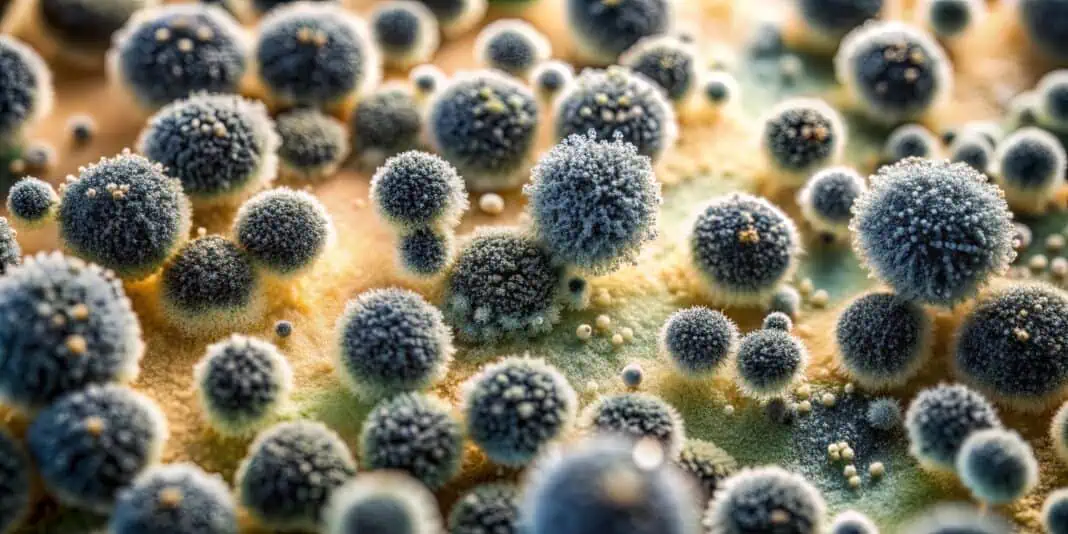Have you discovered mold on your expensive neoprene wetsuit? Don’t panic! After finding mold (twice!) on my freediving wetsuits, I was given an incredibly effective solution to remove mold using isopropyl alcohol that worked, without damaging the wetsuit’s structure.
The first time I found mold on my open-cell freediving wetsuit was in 2023. I was training at Apnea Bali, and we were diving for three days straight and then taking one day off. I figured, “The wetsuit’s going to get wet tomorrow, what’s the point in trying to have it fully dry out before then?” Well…that was quite the mistake.
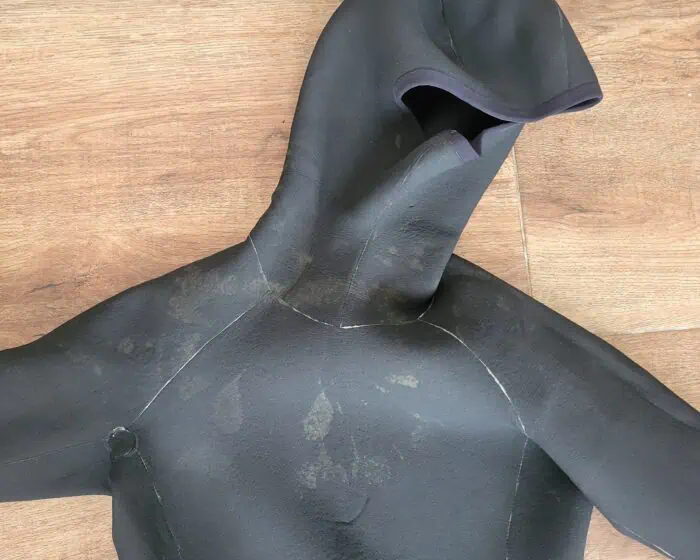
Mold loves moisture, warmth, and poor ventilation. This makes diving in tropical countries with high humidity and not enough wind a great way to invite mold into your expensive wetsuit. And what does mold do? It breaks down the rubber polymers in neoprene, weakening it and reducing its elasticity. It also discolors the neoprene, smells bad, and can cause allergic reactions in sensitive individuals.
In other words, Mold is the silent wetsuit killer.
I searched online and found plenty of people with the same problem, but no solution. Online forums told me that bleach would ruin your wetsuit, while vinegar wouldn’t be enough for certain types of mold (important note: never mix bleach and vinegar or you risk creating chloroform!).
So when I called my father and complained to him about my moldy suit, he said, “Let me ask my friend. He has a master’s degree in molecular biology.” I had no hope, but he came back to me with the simplest solution: isopropyl alcohol.

Isopropyl alcohol removes mold from neoprene by killing mold cells through protein denaturation and cell membrane disruption, while also dissolving the organic compounds that cause discoloration. Unlike harsher chemicals such as bleach, isopropyl alcohol works without damaging the neoprene’s polymer structure, as long as it’s thoroughly rinsed off after a brief application.
To my happy surprise, it worked! But before writing about it, I wanted to try again to ensure it didn’t ruin the wetsuit in the long run. So, in 2025, I became lazy again with drying my properly made wetsuit and had another bout of mold growth…this time on the inner lining of my glide skin wetsuit! It was time to experiment again.
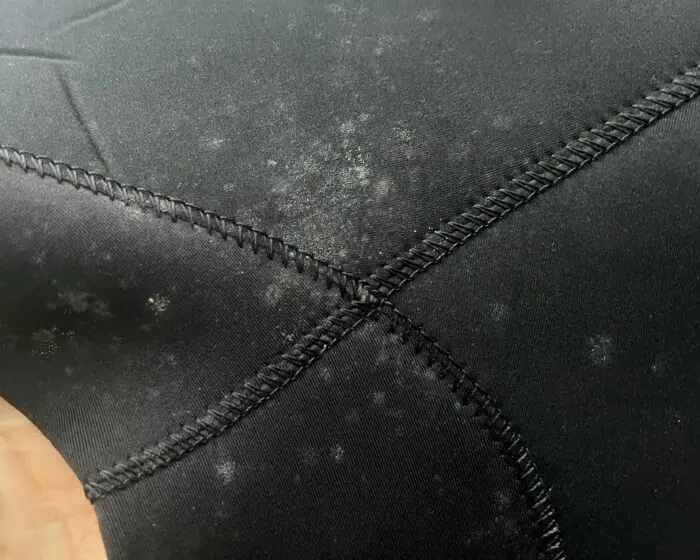
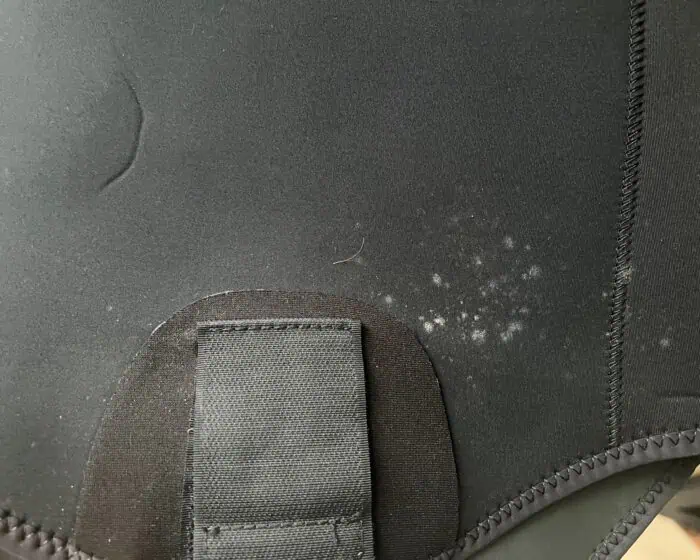
Once again, the mold was gone! So here we are–let’s reveal the steps to remove mold from your wetsuit, finally.
How to Remove Mold from Your Wetsuit
Follow the steps below to remove mold from your neoprene wetsuit.
Place your wetsuit into a bucket and weigh it down
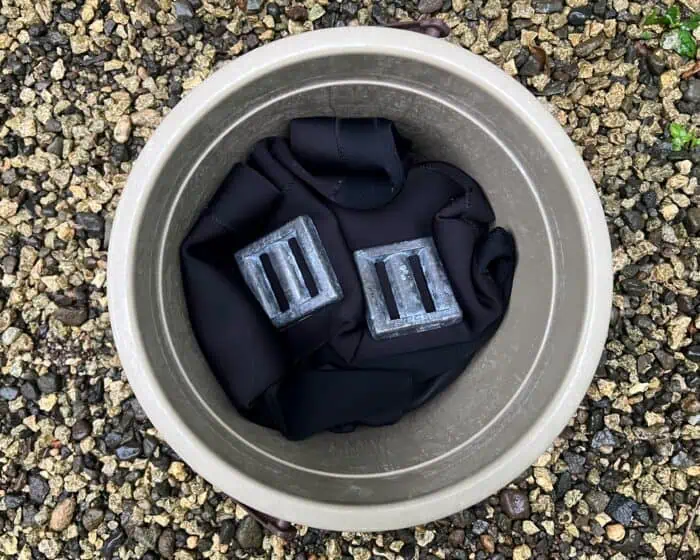
Gently fold the wetsuit and place it into a bucket. Remember that neoprene floats, so use something to weigh it down–I used lead weights.
Fill the bucket with 70 – 94% isopropyl alcohol, covering the entire wetsuit
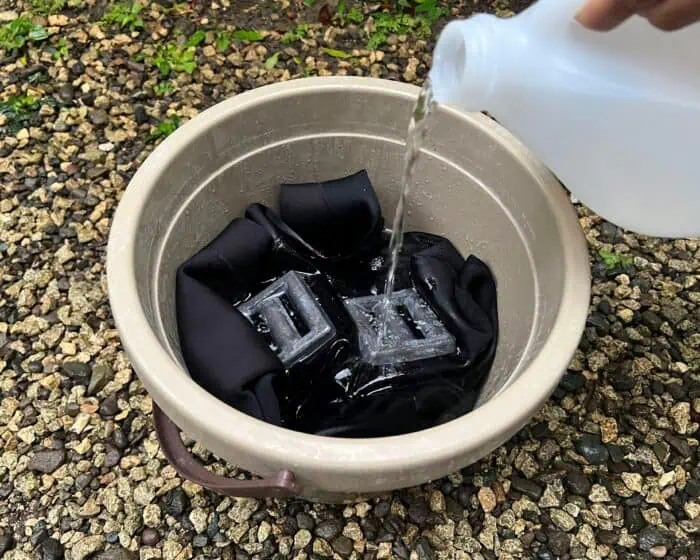
I used 70% isopropyl alcohol purchased from a pharmacy; however, I was told that a higher concentration also works. My father’s microbiologist friend told me that vinegar can also be effective, but it is more dangerous to handle, as you need concentrated vinegar.
Important note: Use gloves when handling the alcohol, and leave your bucket in an open area to ensure proper ventilation.
Leave for 10 minutes to soak
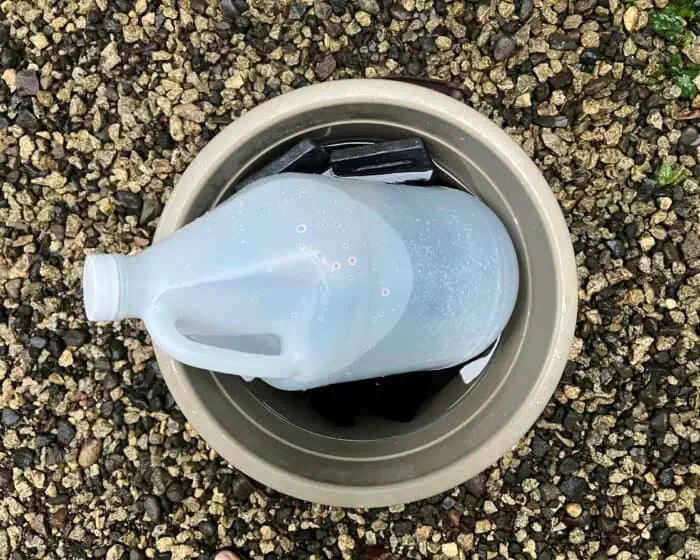
I filled the isopropyl alcohol jug with water to weigh down my wetsuit even more, ensuring it was fully submerged. Now use those 10 minutes to think about how you’ll take better care of your wetsuit next time!
Remove the wetsuit and thoroughly rinse it in fresh water
I rinsed my wetsuits out in the shower multiple times, filling a bucket with water, moving the wetsuit around, and then rinsing it with the shower head. Turn the wetsuit inside out and repeat.
Hang to dry
Hanging the wetsuit properly is a must! If you have an open cell or smoothskin wetsuit, hang the wetsuit with that side out first, and then once it’s fully dry, turn it inside out and hang to dry the other side.
Voila!
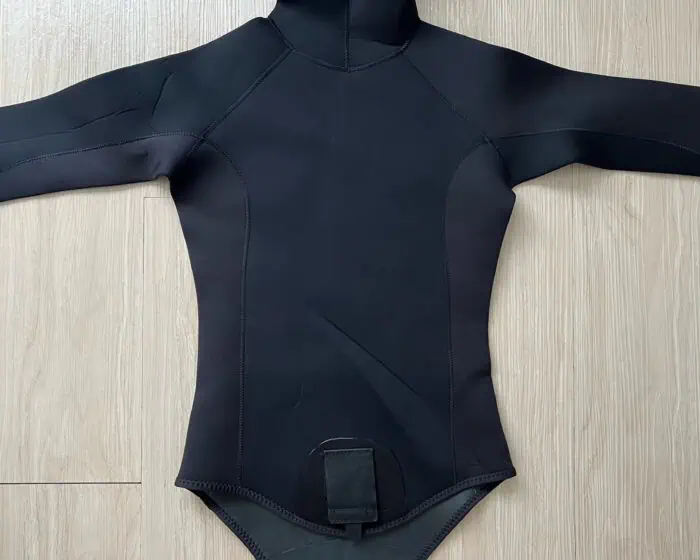
After the wetsuit is dry, continue monitoring it to ensure that the old mold hasn’t returned and that new mold hasn’t grown on it!
Important note: Isopropyl alcohol may damage any screen print on your wetsuit.
Tips to Prevent Mold from Forming on Your Wetsuit
While throwing your wetsuit over a hanger may seem tempting, take a long after-dive nap, and forget about it, remember that wetsuits aren’t cheap! The best way to treat mold is to take care of your investment and prevent it from ever forming in the first place. Check out the tips below!
Properly rinse and clean your wetsuit
- Fully rinse your wetsuit in fresh water after every dive—don’t let salt water dry on it.
- Never machine wash your wetsuits–only by hand.
Dry your wetsuit correctly

- Hanging your wetsuit to dry with the open cell or smoothskin side facing first (in the shade–not in direct sunlight!). After thoroughly drying, turn it inside out and dry it the other side.
- If you leave your wetsuit to dry on a thicker hanger or railing, remember that moisture can accumulate where it is folded over the railing surface. When flipping it over, move the wetsuit to a dry spot.
Strategically store your wetsuit
- You should store your wetsuit in a cool, dry place, ideally by laying it flat or hanging it on a hanger that doesn’t stretch out the wetsuit.
- If you are staying in a humid environment, use a dehumidifier periodically in the room where you store your wetsuit.
So there you have it–a mold-free wetsuit! This simple isopropyl alcohol treatment not only saves your expensive wetsuit from deteriorating (and you from any health consequences from diving in a moldy wetsuit) but could save you hundreds of dollars in replacing a damaged wetsuit too early on.
Just remember that if you take the steps to prevent mold from ever making an appearance on your wetsuit in the first place, you won’t have to perform your science experiment with isopropyl alcohol to save it.
Until then…dive safe, and never alone–always with a certified buddy.

